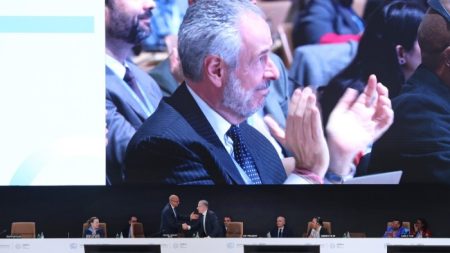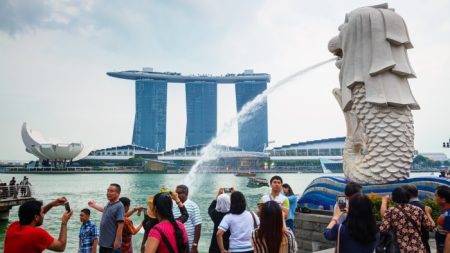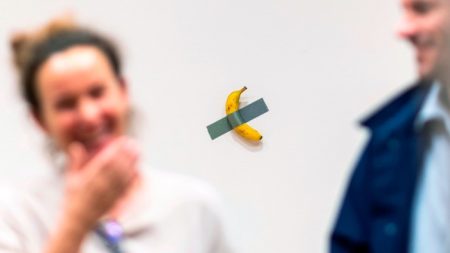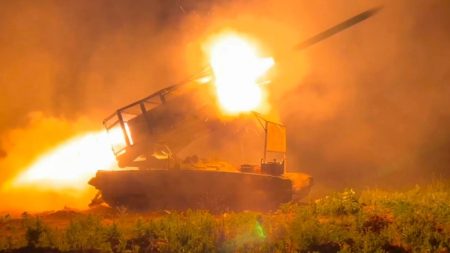Unlock the Editor’s Digest for free
Roula Khalaf, Editor of the FT, selects her favourite stories in this weekly newsletter.
Rawda Akkawy’s daughter was heavily pregnant when the war came to Gaza, leaving the family little choice but to ignore Israel’s warning to residents in the north of the besieged Palestinian enclave to evacuate to the south.
So, as huge numbers have fled the fierce Israeli bombardment of north Gaza, the family of 25 decided to remain in Gaza City. “My daughter Islam was at the end of her pregnancy and the baby needed to be delivered by C-section,” said Akkawy, 60. “Her condition was made worse by fear and the bombardment.”
Israel’s month-long aerial and artillery bombardment has been followed by a ground operation that has this week taken Israeli forces to the “heart of Gaza City”, in the north of the coastal strip. A Hamas military stronghold with a prewar population of 600,000, the city is the centre of Israel’s operation to eradicate the militant group responsible for the attack on October 7.
More than 50,000 people have this week joined the exodus from north Gaza to the south, fleeing on foot, after Israel provided four-hour windows to facilitate the evacuation.
But hundreds of thousands of increasingly desperate people have remained amid dire conditions. Some are too old or too sick to leave, or are caring for family. Others fear falling victim to an Israeli strike on the open road or have nowhere to stay in the already overcrowded south.
It is unclear exactly how many have stayed. The Israeli military has estimated a figure in the low hundreds of thousands, while the Hamas-run Gaza interior ministry said this week that at least 900,000 people were still north of the evacuation line.
Those who have remained have little access to clean water and no power. They live with the constant threat of death as Israeli air strikes pound the city and tanks roll in its streets. Nowhere is deemed safe.
Shops and bakeries in north Gaza have closed, food is scarce and hospitals have been either forced to shut because of lack of fuel and supplies, or they are overwhelmed and barely functioning. Very little of the trickle of humanitarian supplies filtering in through the Rafah crossing with Egypt has reached the north, aid agencies say.
Hundreds of people broke into a warehouse in Gaza City on Tuesday that was part of the territory’s biggest bakery to remove the remaining stocks of flour and oil. The bakery had been forced to shut down on Sunday because it lost power after an Israeli air strike destroyed solar panels on its roof.
Many of those who stayed, including Akkawy’s family, have moved around relatives’ homes in search of safety or taken shelter in UN-run schools, or in hospitals.
The Akkawy family first went to stay at Islam’s home but switched to live with another daughter when the neighbourhood was hit by air strikes. They moved again after the baby was born to be closer to al-Shifa hospital, the city’s main medical facility, because they believed it would not be targeted by Israel, or that they would at least get advance warning if it did.
But Akkawy said that on a recent night “hundreds of missiles” rained down on the area after Israel cut communications. “We sat in the corridor hugging our children and looking at the ceiling as it shook. The children screamed and we couldn’t calm them. I only hoped it would be a merciful death and we wouldn’t be buried alive.”
The fighting moved even closer to al-Shifa on Thursday. Israel has made clear that it intends to take control of the hospital, claiming that Hamas has built a vast headquarters beneath the medical facility. Hamas has denied this and said that Israel’s “false allegations are criminal and dangerous”. Thousands of displaced people have been living in the hospital.
Akkawy said she would not be taking to the road, even if Israel agreed to pause its attacks. “Death is everywhere, and I have pains in my back and legs. The roads are destroyed and neither I nor the small children can make it on foot.”
Health officials in Gaza have said that 10,818 Palestinians have been killed since Israel began its retaliation against Hamas on October 7. These were in response to the Hamas assault in which at least 1,400 Israelis were killed, the Israeli government has said.
Khedr al-Zanoun, a journalist with Wafa, the official Palestinian news agency, is another of those still in Gaza City. He said his mother was too old and needed constant care, and he could not move her to the south.
Al-Zanoun spends his days working from al-Shifa hospital and returning home in the evening. “On Tuesday night our area was bombarded and I felt helpless as my mother and sister screamed while shrapnel, dust and smoke entered the house,” he said.
The next day, Israel struck the area and 13 people in a nearby house were killed, he said. His own building was also hit. “My home’s now been destroyed. They targeted houses, roads and infrastructure,” he added. “There were many civilian casualties and a lot of destruction but ambulances could not reach them.” Some of the dead and injured had to be carried to al-Shifa on a bulldozer.
Aida Aboul Kheir, 50, said she would not leave her injured brother. They, too, have been staying at al-Shifa after Israel bombarded the al-Shati refugee camp, destroying their home and killing seven of their family. Her brother was injured, she said, and had a deep wound in his leg.
“We can’t go south because of his injury and we’re not going to risk dying on the road,” she said. “There’s no safe place and death is everywhere [but] it’s better for us to stay here with our neighbours. God will protect us.”
Read the full article here















